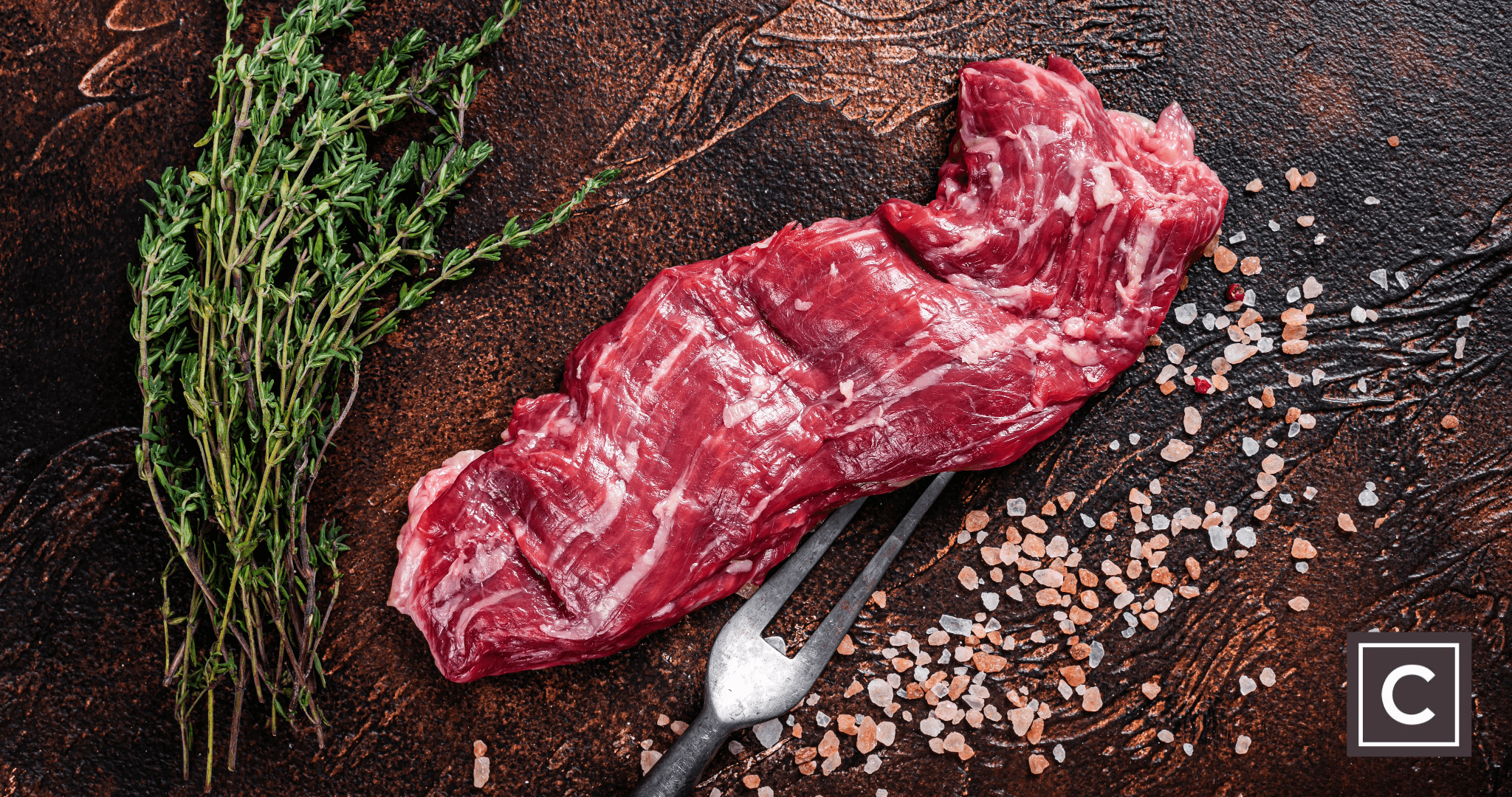Ingredient Glossary: Bavette
Posted by Emily on 1st Dec 2019 Reading Time:
What is Bavette?
Bavette is the French term for flank steak. Similar to onglet, it is a loosely textured and flavourful flat cut. It's often referred to as the butcher's cut, as it's believed that butchers would keep it for their personal enjoyment.

How to cook Bavette
This steak is best grilled at a high temperature, whether on a grill, in a pan or barbecue. It requires delicate handling. Aim for a cook on the rare side of medium-rare – perhaps two or three minutes on each side at most. Then, allow it to rest for a prolonged period, up to 20 minutes, on a warm plate in a tepid location until it approaches room temperature. Slice it into finger-thick strips, from top to bottom, against the grain, just before serving.
While some might suggest coating steaks with olive oil or other oils before cooking, this can produce excessive smoke. Utilising a heavy, non-stick pan is advisable. However, a regular pan at high heat is unlikely to cause sticking. Season the steak post-cooking as it rests.
It's vital to maintain a high cooking temperature; if it's too low, the steak can release moisture, leading it to stew and become tough. It's also crucial not to frequently flip the steak as it complicates timing; once is sufficient. Refrain from pressing down on the steak, as this can release juices.
How to store Bavette
A fresh steak should only be refrigerated for a few days. They can be purchased frozen or frozen at home. If so, consume within roughly a month and defrost gradually, ideally in a fridge overnight. Vacuum-sealing can prolong their shelf-life, lasting months for fresh meat and up to a year for frozen steaks.
Availability of Bavette
This cut is not routinely available under the names bavette or flank steak. However, it's worth enquiring with your local butcher. It's more readily obtainable from online specialist meat suppliers.
Choose the best Bavette
Without a doubt, beef steaks are at their most tender and flavoursome when the carcass has been adequately aged in controlled conditions. Three weeks or 21 days is considered the baseline, but emerging techniques have extended this to over 30 days. The finest beef will possess a deep red hue, a sign that it has likely been well-aged. Lighter, pinkish beef usually indicates insufficient ageing, which can mean a tougher steak with less flavour, especially in steak cuts.
Alternatives to Bavette
Consider trying onglet.

